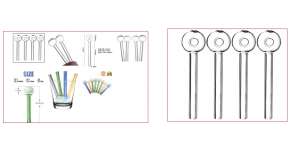Fence installation isn't a one-size-fits-all cost — your location plays a major role in determining the final price. Whether you live in a busy city or a quiet rural area, many geographical factors can significantly impact the overall fence installation cost.
Key Location-Based Differences
1. Labor Costs
-
Urban Areas: Higher wages, unionized labor, and a higher cost of living drive up installation prices.
-
Rural Areas: Labor may be more affordable but skilled contractors may be in short supply, affecting timelines.
2. Material Availability and Delivery
-
Cities: Materials are more accessible with faster delivery options.
-
Rural Areas: Transportation fees for long-distance delivery can add hundreds to the fence installation cost.
3. Permit Requirements
-
Urban: Stricter zoning laws, more expensive and time-consuming permit processes.
-
Rural: Often fewer regulations, lower fees, and quicker approvals.
4. Site Preparation Needs
-
Urban: Limited access for equipment and digging, proximity to utilities may require special handling.
-
Rural: Grading challenges like uneven terrain, tree clearing, or rocks may increase labor hours.
5. Fence Purpose and Style
-
City Fencing: Often for security, privacy, and aesthetics. Popular materials include vinyl, iron, and wood panels.
-
Country Fencing: Typically for marking boundaries or containing livestock — chain link or split rail is common and usually cheaper.
Cost Examples: Urban vs Rural
Scenario 1: 100-Foot Wooden Fence
-
Urban: $3,500–$5,000 (permits, labor, custom style)
-
Rural: $2,200–$3,800 (lower labor, basic style)
Scenario 2: Chain Link Perimeter Fence (300 feet)
-
Urban: $6,000
-
Rural: $4,200
How to Optimize Based on Location
-
Urban Tip: Work with local contractors familiar with city regulations.
-
Rural Tip: Plan early and pre-order materials to avoid delivery delays and surcharges.
Hidden Costs to Watch For
-
Urban: HOA requirements, noise restrictions, limited work hours.
-
Rural: Long travel time for contractors, potential need for temporary fencing.
Conclusion
Location heavily influences your total fence installation cost, from labor rates to delivery fees and regulatory overhead. Whether you're in the heart of a city or nestled in the countryside, knowing what to expect in your area can help you plan smarter and spend more efficiently.
FAQs
Q1. Why is fencing more expensive in cities? High labor rates, tight spaces, and complex permits all increase urban fence installation cost.
Q2. Do rural installations always cost less? Not always. Terrain and delivery logistics in remote areas can offset savings on labor.
Q3. How can I reduce cost in an urban setting? Use local contractors, choose simple fence styles, and avoid peak season bookings.
Q4. What's the most affordable rural fence type? Split rail or barbed wire fencing is typically the cheapest and fastest to install.
Q5. Are permits needed in rural zones? Depends on your location, but rural areas often have fewer restrictions and lower permit fees.





